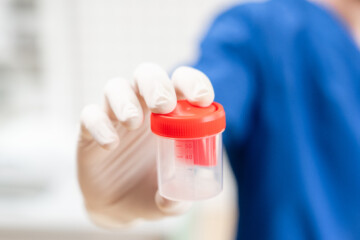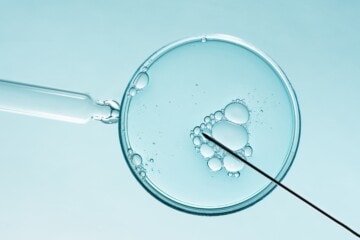If you or your partner has been diagnosed with low sperm motility, there is no reason to panic. Of all infertility cases, approximately 40-50% is due to “male factor” infertility and as many as 2% of all men will exhibit suboptimal sperm parameters. (1) Read on as we guide you through the causes and treatments so that you can take immediate action to improve your chances of conceiving. Low sperm motility can be caused by a number of factors including genetics, smoking, or even work induced health conditions.
What is sperm motility?
Sperm motility describes the ability of sperm to move properly through the female reproductive tract or through water to reach the egg.
Signs of healthy sperm:
The standard semen analysis looks at the following parameters:
- Semen volume (ml) 1.5
- Total sperm number (million per ejaculate) 39
- Sperm concentration (million per ml) 15
- Progressive motility (%) 32
- Sperm morphology (normal %) 4
- Vitality (live sperm, %) 58
Please be aware that these parameters are the commonly measured ones. Other factors may also be present such as DNA fragmentatin or DNA decondensation.
Abnormality in any of these factors can result in male-factor infertility, but here we are looking at poor sperm motility.
If you or your partner has poor sperm motility it is called asthenozoospermia or asthenospermia. With healthy (motile) sperm, you should see forward progressions of a least 25 micrometres per second. Poor sperm motility includes non-progressive motility, which is considered to be anything less than 5 micrometres per second. Other types of sperm motility issues include sluggish or slow progressive motility.
What causes low sperm count?
There are a number of possible causes for low motility sperm such as:
- A genetic cause
- An undiagnosed medical condition
- Smoking
- Work induced infertility — particularly jobs which involve repeated trauma to the pelvic area.
- Health conditions such as varicocele (when veins in the scrotum become enlarged).
- Disorder in the male accessory sex gland secretion, leading to glands emptying more slowly.
Progressive sperm motility
Progressive sperm motility is a term that refers to generally healthy, functioning sperm – because if its motility is progressive this means that it swims mostly in a straight line in order to reach its destination. Progressively motile sperm generally move at 25 micrometres per second or more and at least 32% of the sperm in a sample must be progressively motile for the overall sperm motility to be deemed “normal”.
Sperm motility issues: slow progressive motility vs. non-progressive motility
In cases of slow and non-progressive motility, the sperm is still motile, but travels much slower and not in a straight line. Slow, or sluggish, progressive motility refers to a speed of movement of less than the healthy 25 micrometres per second, whereas non-progressive motility specifically refers to sperm that still move but at a speed lower than 5 micrometres per second.
How do you know if this affects you?
Routine semen analysis will test sperm motility. Your sperm sample must be kept at room temperature and delivered to the testing facility within 30 to 60 minutes. You have low sperm motility if the testing finds that less than 40 percent of your sperm are motile.
Treatments for low sperm motility
While there are a number of steps that you can take to improve sperm quality, such as exercising and quitting smoking, you may find yourself turning to clinical treatments and supplements to help. It is important to be aware of the many options available to you and the potential side effects associated with each. No two people are the same and if you are having problems with low sperm motility then there is no one prescribed method that fits everyone.
Start your journey with Impryl today
The fertility supplement for both men and women
How to increase sperm motility naturally:
The good news is that there are some positive lifestyle changes that you can make to help increase sperm motility:
Stop smoking
Quitting smoking is the best option for fertility. Studies have shown that smoking has an impact on sperm parameters and can also speed up the loss rate of eggs. (2)
Reduce alcohol
Heavy drinking can alter sperm motility as well as shape, size and count and testosterone levels. (3)
Exercise regularly
One recent study has found that men who had intense workouts had better sperm motility than men who didn’t exercise much. (4)
Maintain a healthy weight
Studies have shown that weight loss can significantly increase sperm mobility, as well as semen concentration and volume.
Limit mobile phone exposure
Research has discovered that radiofrequency and radiation may negatively affect sperm quality in men, by decreasing sperm motility and count along with the semen concentration and volume. We all have to use our mobile phones, but limiting its use by turning it off for periods of time can help cut down your exposure to radiofrequency.
Wear loose boxer shorts
A study by Prof Allan Pacey, Professor of Andrology, University of Sheffield, showed that men who wore boxer shorts, as opposed to tighter pants, were significantly less likely to have low motile sperm counts. He advises that men with poor sperm quality switch to loose fitting boxer shorts to potentially improve their semen quality.
Improve sperm motility and function – which supplement should I take?
Although a lot of male fertility supplements claim that they can improve sperm quality, they barely have any clinical evidence to prove it. The fact is that many of them contain strong antioxidants, which can actually damage the quality of your sperm by causing DNA decondensation. Impryl® provides balanced metabolic support, helping to achieve the good quality sperm (and egg) needed to create a baby. Taking Impryl® is different as it enables your body to produce natural antioxidant glutathione and maintain its natural metabolic balance. It will help high energy production along with normal gene expression and enhanced natural antioxidant defences which are all essential for sperm development.
Even if the sperm motility is low, it has been demonstrated that most men with poor sperm quality, including low motility also suffer from a condition called DNA fragmentation, – something that is not routinely tested for. DNA fragmentaion reduces fertilisation rates and increase the chances of miscarriage should a pregnancy be achieved. Taking Impryl may increase sperm motility, but in addition it will definitely improve DNA fragmentation, which will almost certainly be present in such men. Helping develop the best sperm will increase the chances of conception even with a lower sperm motility. Impryl does not cause DNA decondensation.
There are many things which can affect male fertility — you may need to use techniques such as in vitro fertilization or intrauterine insemination (IUI) — but the good news is that there are also ways in which you can improve a low sperm motility and increase your chances of conceiving naturally, or via assisted conception techniques.
To see how Impryl has helped male fertility, have a read of our real life success stories.
Sources
Kumar N, Singh AK. Trends of male factor infertility, an important cause of infertility: A review of literature. J Hum Reprod Sci [serial online] 2015 [cited 2022 Jul 25];8:191-6. Available from: https://www.jhrsonline.org/text.asp?2015/8/4/191/170370
Bin Sun, Carmen Messerlian, Zhong-Han Sun, Peng Duan, Heng-Gui Chen, Ying-Jun Chen, Peng Wang, Liang Wang, Tian-Qing Meng, Qi Wang, Mariel Arvizu, Jorge E Chavarro, Yi-Xin Wang, Cheng-Liang Xiong, An Pan, Physical activity and sedentary time in relation to semen quality in healthy men screened as potential sperm donors, Human Reproduction, Volume 34, Issue 12, December 2019, Pages 2330–2339, https://doi.org/10.1093/humrep/dez226









